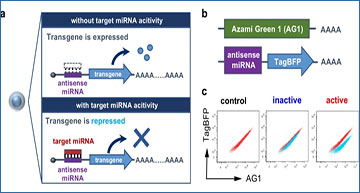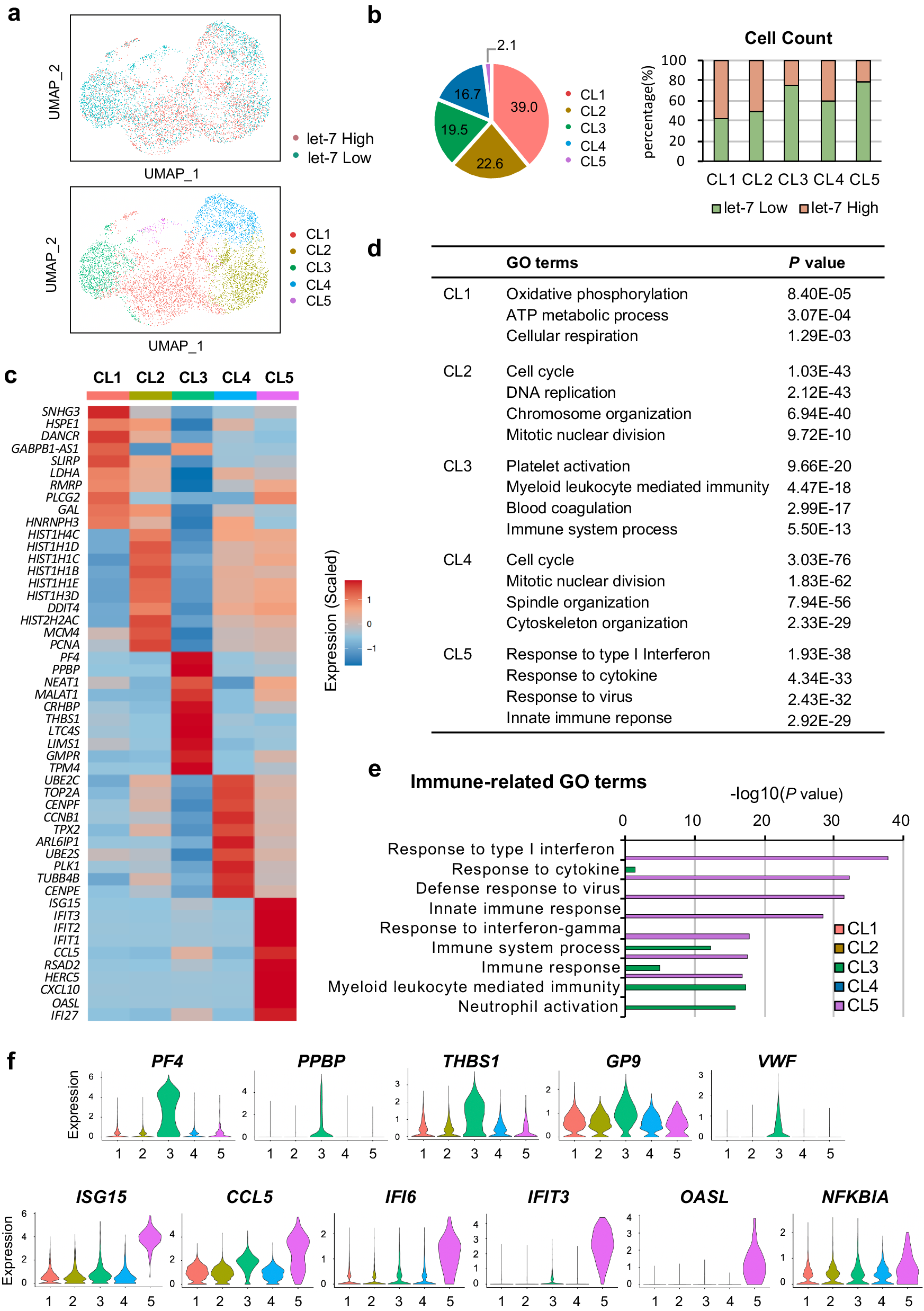A team of researchers at Kyoto University led by Professor Koji Eto (Department of Clinical Application) recently discovered the importance of a microRNA-based regulatory mechanism for enhancing the quality and quantity of platelets generated by iPS cell-derived megakaryocytes.
Megakaryocytes (MKs) are traditionally recognized for their primary function of platelet production. However, new evidence in recent years suggests they may also possess immunomodulatory functions. The research team recognized heterogeneity as a critical issue hindering the high-quality ex vivo manufacturing of iPS cell-derived platelets (iPSC-PLT) from immortalized MK progenitor cell lines (imMKCLs) and questioned whether they could identify specific imMKCL subpopulations based on differential microRNA (miRNA) activity. Employing miRNA switch technology developed by Professor Hirohide Saito (Department of Life Science Frontiers), the researchers screened a library of over 250 miRNA switches and identified 24 active miRNAs in imMKCLs. From these active miRNAs, they chose to focus on let-7a-5p and let-7g-5p miRNAs because they observed distinct imMKCL subpopulations with either high or low activity of these miRNAs.
The researchers next separated imMKCLs into let-7 high and low subpopulations to examine their gene expression patterns during proliferation or maturation by bulk RNA sequencing (RNA-seq). Notably, they found immune-related genes were enriched in both let-7low proliferating and mature imMKCL subpopulations, characteristic of MK progenitor cells with immunomodulatory functions. The researchers obtained similar results when they examined the transcriptome of let-7low and let-7high CD34+ hematopoietic progenitor cells (HPCs) derived from human embryonic stem cells, thus revealing that such properties (thrombopoietic vs. immunomodulatory MK progenitor cells) are determined as early as the HPC stage. When they further examined imMKCL heterogeneity at the single-cell (sc) level by scRNA-seq, five transcriptomically distinct cell subpopulations were identified, two primarily comprised of let-7low imMKCLs. An in-depth examination of upregulated genes in these two cell clusters suggests they likely represent a subset with functional duality (thrombopoietic and immunomodulatory) and an immunomodulatory MK progenitor subset.
Single-cell RNA-seq reveals the presence of transcriptionally distinct immune-skewed subpopulations that are abundant in let-7a-5p low-responsive imMKCLs
a Visualization of imMKCLs (clone 7) by uniform manifold approximation and projection (UMAP) and colored according to let-7a-5p high/low-responsive imMKCLs and imMKCL sub-clusters. b The distribution of let-7a-5p low- and high-responsive cells in each cluster, and a bar plot showing the distribution of let-7a-5p low- and high-responsive cells in each cluster. c The relative expression level of the top ten DEGs in each cluster. d The representative terms of GO:BP enriched in each cluster. GO terms under the biological process category for upregulated differentially expressed genes (DEGs) in each cluster were analyzed by g:Profiler, p-values were determined by a default hypergeometric test and correction for multiple testing has been performed by the g:SCS algorithm. e Typical immune-related GO:BP terms in each cluster. f Violin plots showing the expression level of typical thrombopoiesis-related and immune-related genes in each cluster. Source data are provided as a Source Data file.
Based on this new knowledge about let-7-mediated effects in imMKCLs, the research team demonstrated that both genetic and pharmacologic RALB inhibition could improve imMKCL proliferation and platelet production. Through this study, the researchers uncovered a previously unknown let-7-RALB regulatory axis, which will no doubt contribute to the enhanced industrial-scale manufacturing of iPSC-PLTs for clinical applications in the future.
Source – Kyoto University
Chen SJ, Hashimoto K, Fujio K, Hayashi K, Paul SK, Yuzuriha A, Qiu WY, Nakamura E, Kanashiro MA, Kabata M, Nakamura S, Sugimoto N, Kaneda A, Yamamoto T, Saito H, Takayama N, Eto K. (2024) A let-7 microRNA-RALB axis links the immune properties of iPSC-derived megakaryocytes with platelet producibility. Nat Commun 15(1):2588. [article]





